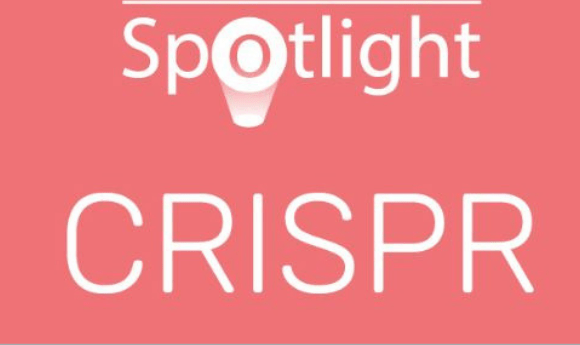CRISPR survey: the results are in!

As part of our Spotlight on CRISPR, we asked you, our readers, to tell us where you think CRISPR technology is headed and what challenges you face. From current applications, to ethics and future developments; here are the highlights from our results.
Who participated?
Scientists represented 56% of our respondents, however, organizations that participants were from varied greatly with 52% in academia, 27% in biotech/biopharma and 14% in healthcare.
37% of participants are currently working with CRISPR and 78% of those report solely using CRISPR technologies. Of the 67% of respondents currently not working with CRISPR, 39% report they will be using the technology within the next year.
What do participants use CRISPR for?
The top five applications are: gene knockout (78%); cell lines (43%); mutation corrections (35%); pathogen diagnostics (17%) and high-throughput screening (13%). The majority use S. pyogenes Cas9 endonuclease and CRISPR Design and/or GenScript tools for gRNA design.
Interestingly, technologies to analyze the effectiveness of CRISPR studies were all used equally. These include: high-throughput sequencing; Sanger sequencing/TIDE; T7 endonuclease activity/assay and fluorescent based reporter assays.
Past, present and future advancements in CRISPR technology
Remarkably, there was minimal discrepancy between the respondents’ choices for ‘best overall improvement to CRISPR’ considering the vast array of CRISPR applications. Multiplexing gRNAs, CRISPR-editing of RNA and tri-functional CRISPR systems equally scored 26%, closely followed by Broader PAM specificity (22%). Additionally, the respondents chose the best method for improving efficiency in gene knockout as use of RNP, dual gRNA and synthetic RNA (39, 35 and 22%, respectively).
Respondents suggested novel enzymes for more effective systems, prediction algorithms for efficient gRNAs, increased insertion rates in cell lines and improved delivery of agents as key technological future developments.
-
Novel CRISPR/Cas9 nano-carrier shows promise for therapeutic applications
-
The evolution of CRISPR
-
Talking Tech News | Theo Roth on CRISPR, CAR-T and gene editing ethics
Challenges
70% reported key challenges to be editing efficiency/accuracy, 48% in production of off-target effects and 22% in verification of edits.
Although these challenges are present, 100% of respondents believe that the number of CRISPR studies will increase over the next 3 years, and 70% believe that there will be a shift in its applications.
Ethics surrounding the use of CRISPR
45% of respondents believe that the current regulations surrounding the use of CRISPR are sufficient, however, 40% were unsure. When the respondents were asked about the main challenges surrounding bringing CRISPR to market, the top answers were regulation (25%) and ethics (20%), whilst 15% of participants believed both cost and issues with the technology were key challenges..
The participants were also asked if they agree or disagree with three statements surrounding the implied future applications of CRISPR technologies. Although legal in some countries and with experiments currently underway, only 50% of respondents agree with CRISPR being used for research purposes in human embryos that will not be brought to term. But, 60% of respondents agreed with CRISPR being used to prevent serious genetic disorders in human embryos that will be brought to term. Additionally, only 5% agree for use to enhance traits in embryos that will be brought to term and a further 20% agreed with none of these statements.
Want to see more? Head over to see the rest of the results in our infographic and check out our panel discussion: What does the future hold for CRISPR.
Thank you to everyone who participated. Watch out for our next Spotlight on cancer research beginning in September where you will have another opportunity to share your thoughts!
We’d love to hear what you think of the results. Tweet us @MyBioTechniques